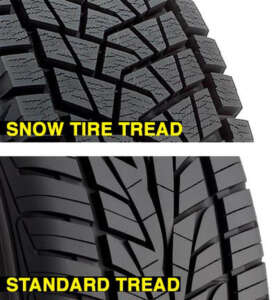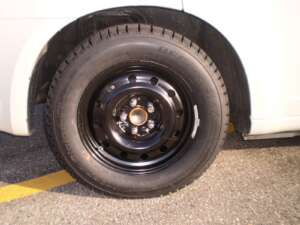Winter tires and your auto insurance
As we head into winter in Ontario, people are making the switch over to their winter tires for improved handling in the snow and ice. However not everyone uses them, as some people make due with all-season or all-weather tires. Following our recent article on how claims and tickets affect your insurance rates (https://sukhuinsurance.ca/resource-centre/how-claims-and-tickets-affect-your-auto-insurance), today we explore one of the ways to help you reduce the chances of having incidents during the winter.
What’s different
Winter tires have different tread patterns with deeper groves designed to perform better during snowy conditions. More importantly they are also made of different types of rubber compounds that perform better in subzero temperatures. In fact, the lower the temperature the stiffer the rubber in any tire, which makes it harder to grip in snow and ice. The rubber of winter tires are designed to remain softer at colder temperatures which is better for traction, which is also conversely why they should be swapped out during the summer as the heat from the roads will wear out the softer rubbers faster.
Insurers reward you for using them
Insurance companies recognize that switching tires can improve handling in the snow and ice, and so you can save up to 5% off on your auto insurance premium for using winter tires during the winter season. Different companies have different rules on the exact timing but generally you would be required to have winter tires installed from November or December until March or April in order to qualify for the discount. Please consult your policy details or contact your broker to confirm when those dates would be for your policy.
Mounting tires on their own rims
Many people have a separate set of rims for their winter tires, and one of the reasons is to reduce the stress that is placed on both set of tires for removing and installing on a shared set of rims. It also simplifies the process to switch to winter tires in the fall and back to summer tires in the spring, so most mechanics would charge a reduced fee since it’s less work and takes less time. You may even find that having separate rims will pay for itself because of the reduced service fees from your mechanic! You may also notice that many people who have aluminum alloy rims in the summer use steel rims in the winter. Part of the reason is the lower cost of the steel rims, but it is also because road salt can eat away at the aluminum resulting in costly repairs. Road salt will also cause rust on steel rims, but it’s less costly to deal with that or even to just replace a badly rusted rim. Regardless, you would want to clean off your rims from time to time to get rid of the accumulated road salt.
The added costs and savings
While it’s true that there would be an added cost to buying an extra set of tires, you would also have to factor in the reduction on wear and tear on your summer tires. If you use your summer tires for 4 or 5 months less per year, how much longer would they last? You would have a higher upfront cost to buy two sets of tires, but if you only have one set of tires you would have to replace them sooner so it may work out to costing about the same as having two sets of tires! We have already mentioned the savings on your insurance premiums, and those savings could pay for your mechanic’s fees to swap out the tires, and potentially even pay for the second set of tires over the years.







